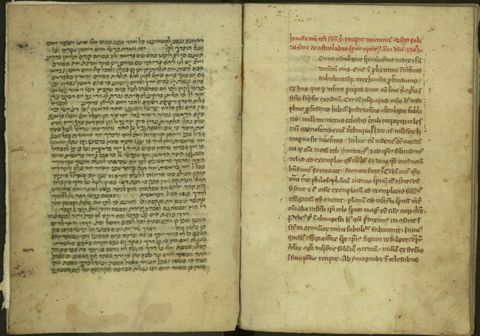Two manuscripts from the Biblioteca Comunale of Palermo might be seen as emblematic of the mixing of cultures that characterized late medieval Sicily. The first, MS 4 Qq A 10, is a collection of texts of alchemy compiled in the 14th century in Palermo. While the texts are mostly Latin, some of them are translations of treatises in Arabic by figures such as Ibn Sīna. and Abu Bakr. There is a small portion of the manuscript that contains an Italian vernacular text as well. Perhaps most interestingly, the incorporation of other languages like Greek and Hebrew to such an extent that the Greek and Hebrew alphabets are transliterated. While we cannot be certain, it seems likely that the compiler of this manuscript was a 14th-century Palermitan Jew. Supporting evidence is found not only in the Hebrew alphabet, but also in the form of certain names like "Ebu Bacher" for "Abu Bakr" that seem inflected with Hebrew.

The second manuscript, MS 2 Qq E 5, is primarily an anonymous Latin treatise on the theory and practice of using an astrolabe. The first eight pages of the text, however, are in Hebrew and consist of a partial rabbinical commentary to the book of Genesis. It is unclear how or why this 14th century manuscript was used and reused for two distinct purposes, but the confluence of Latin and Hebrew together in an erudite context points to a more global consideration of knowledge production and cultural interaction in this historical moment.

In both of these cases, we can perceive an erudite Hebrew presence in 14th century Sicily that interacts with other languages in the sharing of knowledge across the table. This is significant in the immediate context of the 14th century, already a fair bit removed from the 13th century court of Frederick II that has often been viewed through the lens of this sort of multicultural intellectual inquiry. But it is also a way of recuperating a Jewish history that is notoriously difficult to unearth in Sicily, especially in the wake of the expulsion of Jews from the island in 1492. Only now in 2017 has the Palermo church of Santa Maria del Sabato been deconsecrated to become the first new synagogue in Sicily since the 15th century. Seen here on the right is a street sign from the area around the new synagogue that tellingly represents the multilingual strands of identity that can be perceived by a look to medieval Sicily.

